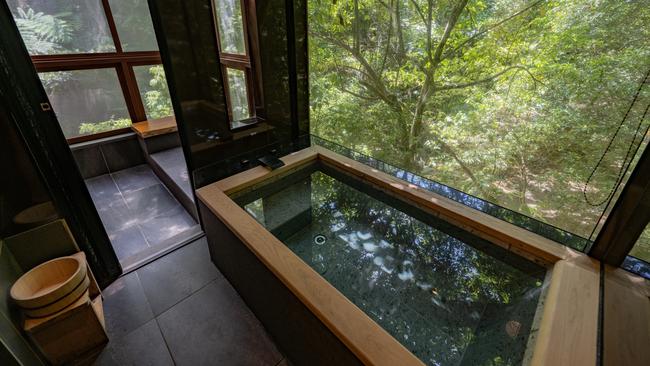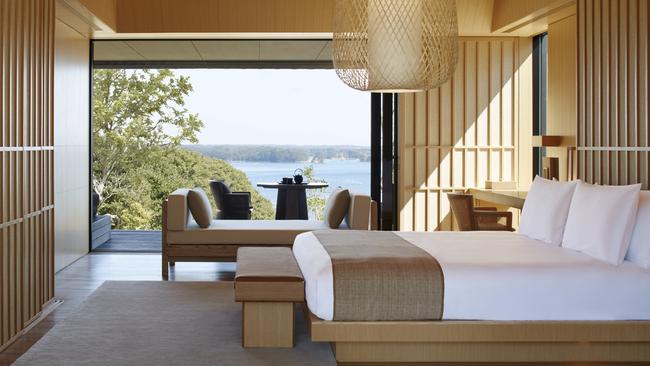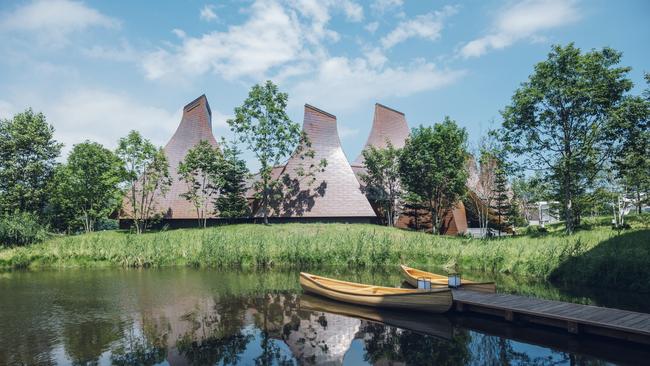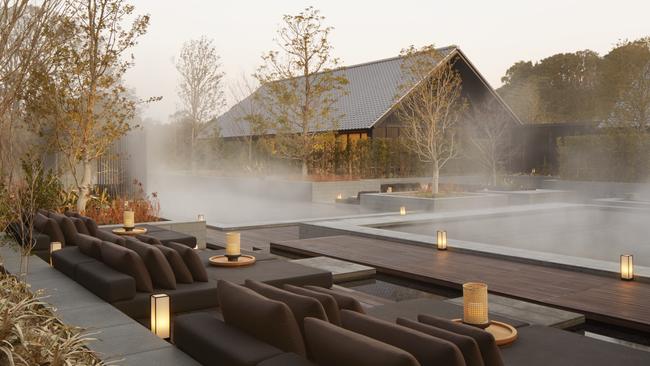Where to fulfil your childhood treehouse fantasies
Immerse yourself in nature, homespun hospitality and clever design at these secluded Japanese inns and hideaways.

About a year ago, I met Yoshiharu Hoshino, chief executive of Hoshino Resorts, and asked him which accommodation in his company’s portfolio of Japanese inns and hideaways offered the most seclusion and connections to nature. I think the question puzzled him a little as Japan is a small country, but away from the metropolis of Tokyo lie vast tracts of rural landscapes and coastline. We chatted to and fro about the importance of sanctuary tourism, the meaning of shinrin-yoku (contemplative forest bathing), the general reverence for seasons in Japan and importance of immersion in nature.
That conversation made me think afresh of the places I’ve stayed at in Japan over many decades and where I’ve felt most rejuvenated and at one with my surroundings. Here are some favourite examples and new suggestions:

Environmentally friendly
The Treeful Treehouse sustainable resort on the southern island of Okinawa comes recommended by the government’s Japan National Tourist Organisation and is truly one of a kind. Fully opened in 2021 as a “dream project” by Tokyo entrepreneur Satoru Kikugawa and his eco-scientist daughter Maha, the solar-powered compound sits lightly in a remote forest on the banks of a river. The experimental first structure, Spiral Treehouse, was built in 2014 and a small clutch of others in individual styles swiftly followed, all built high to protect the wildlife habitat, and positioned around natural forms so no clearing or disruption to landscape has been required. Expect a decor of shredded wood, branches and natural stone, bathtubs with lofty views, and plenty of creature comforts; activities such as trekking, walks to waterfalls and boating; and full service and meals. The owners are now working with the Cambodian government to launch a similar eco-project to bring attention to the kingdom’s at-risk national parks. ANA offers regular flights from Tokyo Haneda to Okinawa’s Naha airport; the Treeful compound is a 90-minute drive away.

Country comforts
Airbnb has become a leading accommodation option in rural areas, especially for travellers keen to experience innate Japanese style, but many villages offer hosted inn experiences on an independently booked basis. Particularly popular are traditional houses with steep grass-thatched roofs in the World Heritage-listed enclave of Shirakawa in Takayama, west of the Japan Alps and about 180km northeast of Kyoto. In this area, the village of Ogimachi has more than 20 guesthouses and about a dozen traditional ryokan. More broadly, the concept of minshuku, or home stays, has long been a popular choice in cities, seaside towns and near ski fields. Most are family-run and less formal than ryokan; rates usually cover the option of home-cooked dinners as well as breakfasts but guests should be prepared to sleep on a futon (not always, but commonly so) and carry an English-Japanese phrasebook or load a translation app. The local tourism association can usually assist with bookings, and consolidation sites such as Booking.com have limited listings.

Seamless itineraries
To choose one brand to unify an itinerary may seem lazy but not when it’s Hoshino Resorts, founded in 1914 and now with more than 50 properties. In the broader mix are a Tokyo high-rise dubbed a “ryokan in the sky” and northern ski lodges, but central to its ethos is the 25-strong KAI “auberge” portfolio of family-friendly inns, spread across the main islands, and including many features of time-honoured lodgings but with a more informal and sometimes quirky vibe. These options are all close to hot springs, so bathing and cultural experiences are firmly on the agenda. KAI Poroto on Hokkaido is a standout, featuring the cone-like architecture of the Ainu tribespeople and two surprisingly futuristic bathhouses offering thermal therapies with forest views.

Brand loyalty
For a progressive tutorial from north to south on the modern interpretation of classic Japanese design, start with the late West Australian architect Kerry Hill’s Aman Tokyo in the heart of the capital, progress to his Aman Kyoto, set amid ancient forested realms, and then slink down to Amanemu on the Ise-Shima peninsula, about three hours by train from Nagoya airport. While each is its own jewel, there’s a unified consistency of uncluttered and finely crafted architecture and interiors mixed with all the expected contemporary must-haves. If an itinerary allows for just one, and relative isolation is the goal, opt for Amanemu, set on a ridge in the hills of Ise-Shima overlooking Ago Bay. Immaculate guest villas feature cypress timbers and sliding rice-paper shoji screens plus deep black basalt soaker tubs into which taps gush mineral-rich water supplied from an onsite hot spring that also feeds the onsen bathing pools. The entire experience feels completely off the map, set in aspic, as if a samurai could wander past at any old tick of the ancient clock.
If you love to travel, sign up to our free weekly Travel + Luxury newsletter here.




To join the conversation, please log in. Don't have an account? Register
Join the conversation, you are commenting as Logout